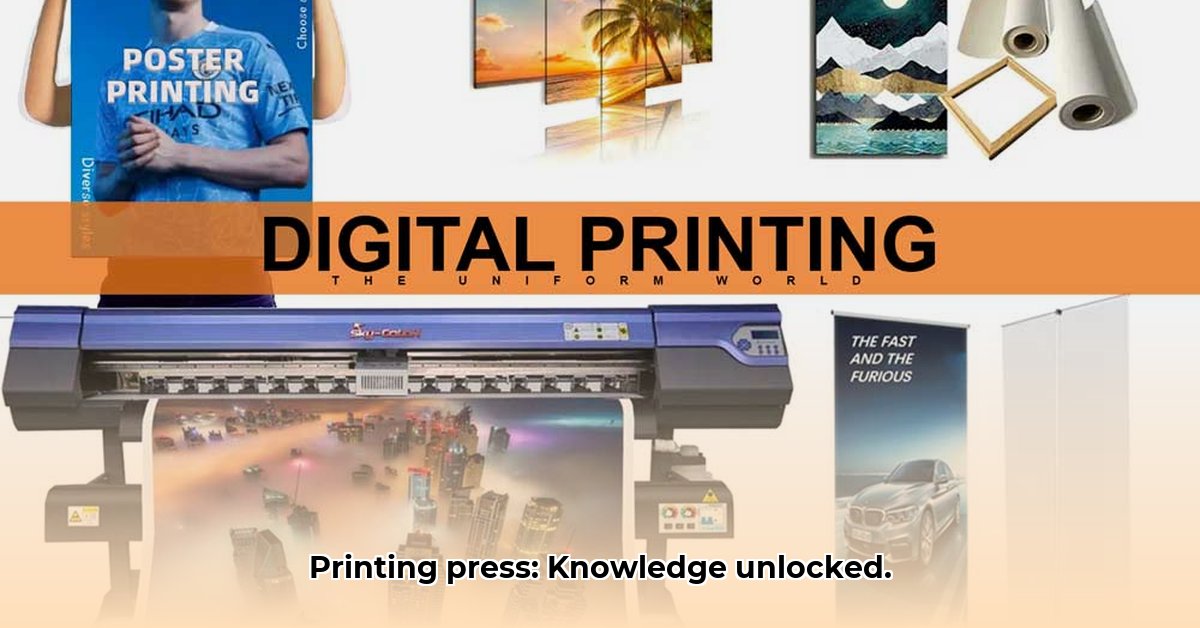Imagine a world where accessing a book felt like winning the lottery, a rare and expensive feat. That was reality before the printing press. This invention didn’t just transform reading; it fundamentally reshaped human history, igniting revolutions and ushering in an era of readily available information. It’s a narrative of innovation, unforeseen outcomes, and an enduring legacy that continues to influence our digital existence. For a glimpse into the scale of information loss before widespread printing, see Alexandria’s loss.
The Revolutionary Invention That Sparked a New Age of Information
Before Johannes Gutenberg, printing existed in other regions of the world. The Chinese utilized woodblocks to print text and images centuries prior. Koreans even innovated with movable metal type, a system where individual characters could be arranged for printing. These early advancements, though advanced, didn’t achieve the widespread impact of Gutenberg’s press in Europe. Why? Europe was ready. It wasn’t just better technology; it was the right technology at the right time and place. What key elements converged to make Gutenberg’s printing press such a pivotal innovation in history? Examining the socio-economic factors reveals a complex interplay of literacy, trade, and the burgeoning Renaissance spirit.
Gutenberg’s Contribution: More Than Just Movable Type
Johannes Gutenberg did not invent movable type. But he significantly advanced it. His press utilized reusable metal type, durable and reusable, speeding up the printing process. Books became more accessible, triggering far-reaching implications that changed people’s access to information. Gutenberg’s key contribution was a system. He developed a method for casting individual letters from metal molds, allowing for the creation of uniform and easily reproducible type. He also designed a press that adapted the screw-press mechanism, traditionally used in winemaking, to apply even pressure to the printing surface. This combination of movable type, durable ink, and a reliable press made mass production feasible.
Before Gutenberg, painstakingly copying a book could take months, even years. His press could produce hundreds or thousands of copies in less time, dramatically lowering book costs and democratizing information, setting the stage for revolutionary change. How did this increased efficiency in book production directly contribute to societal transformations? It accelerated the spread of Renaissance ideas, fueled the Reformation, and fostered the growth of scientific inquiry by enabling the rapid dissemination of knowledge and new discoveries.
The Reformation: A Case Study in the Power of the Printing Press
The Protestant Reformation vividly shows the impact of Gutenberg’s press. Martin Luther’s ideas, limited to whispers and handwritten copies, reached a vast audience through the printing press. His pamphlets and books spread across Europe, fueling religious upheaval. Before the printing press, controlling information meant controlling power, but the printing press weakened that control, letting authority be challenged on a scale never before seen. The printing press allowed for the mass production of Luther’s “Ninety-Five Theses,” which were quickly distributed throughout Europe. His translation of the Bible into German made scripture accessible to the common people, further challenging the authority of the Catholic Church.
From Wooden to Digital: The Evolution of Printing Technologies
Gutenberg’s press was just the start. Technology significantly improved over centuries. Wooden presses were replaced by metal ones, with steam power driving presses faster. Cylinder presses and offset printing emerged, increasing speed and quality. More books, cheaper books, and a constant influx of new ideas became the status quo. What are the fundamental differences between early printing methods and modern digital printing technologies? Early methods relied on physical type and manual operation, while digital printing uses electronic files and inkjet or laser technology to create images directly on paper, enabling faster turnaround times, personalized prints, and on-demand production.
A Transformed World: The Ripple Effect of the Printing Press
The printing press’s impact went beyond books. It triggered massive societal change. Literacy rates increased as books became readily available, empowering communities. Education became more widespread, leading to a more informed populace. The rise of printed vernacular languages let people access information in their native tongues. Scientific discoveries accelerated due to quick dissemination as well. It transformed intellectual discourse, with new ideas challenging norms and accelerating change. The printing press facilitated the standardization of knowledge, promoted critical thinking, and fostered a more informed and engaged citizenry, paving the way for democratic ideals and social progress.
Copyright laws and censorship became crucial considerations in the information landscape. The ability to control information spread was now a game of power, plus the ability to share those ideas. The rise of printing prompted authorities to attempt to control the spread of information through censorship, but the sheer volume of printed material made it increasingly difficult to suppress dissenting voices and alternative viewpoints.
The Printing Press in Today’s World: A Lasting Influence
Today, we live in a digital world. Yet, the printing press’s influence is undeniable. It laid the foundation for the modern information age, providing an understanding of how to mass-produce and distribute information. While ebooks and digital printing have taken the lead, physical books remain significant in our lives. The printing press, while evolving, remains a pivotal technology in the sharing and access of information. The principles of mass communication, information dissemination, and the democratization of knowledge established by the printing press continue to shape our digital landscape, even as technology advances.
Technological Advancements in Printing: A Historical Timeline
| Era | Technology | Impact |
|---|---|---|
| Pre-Gutenberg | Woodblock printing, movable type | Limited production, primarily for official documents and religious texts. |
| Gutenberg Era | Movable metal type printing press | Mass production, wider dissemination of information, fueled the Renaissance and Reformation. |
| 18th-19th Century | Cylinder, steam-powered presses | Increased speed and efficiency; newspapers and mass-market books became possible. |
| 20th Century | Offset printing | High-volume, color printing; widespread availability of affordable books and magazines. |
| 21st Century | Digital printing, on-demand | Personalized printing, reduced costs, environmentally friendly options; ebooks. |
The printing press’s story is far from finished. The ongoing evolution of information technology pushes the boundaries of how we create, access, and share knowledge. The rise of digital media presents both challenges and opportunities for the printing industry, as it adapts to meet the evolving needs of a society increasingly reliant on electronic communication.
How Has Printing Press Technology Transformed?
Key Takeaways:
- Gutenberg’s invention revolutionized information access, sparking intellectual and cultural ferment.
- Technological advancements steadily increased printing speed and efficiency.
- Digital printing offers unprecedented customization and speed.
- Environmental concerns and competition from digital media present modern challenges.
Early Printing Methods: The Genesis of Mass Communication
Before Johannes Gutenberg’s press, printing was a slow process. East Asian cultures, including China and Korea, had developed woodblock printing centuries earlier, but this technique was painstaking. So, how did printing press technology evolve from Gutenberg to digital printing? The journey involves a progression from manual, labor-intensive methods to automated, high-speed processes, driven by technological advancements and the growing demand for printed materials.
Gutenberg’s Genius: Movable Type and the Democratization of Knowledge
Gutenberg’s innovation included reusable metal characters, creating a game-changer. This advancement profoundly impacted Europe, exemplified by the spread of Martin Luther’s ideas. Information became widely accessible. Gutenberg’s system enabled the mass production of books at a fraction of the cost of hand-copying, democratizing knowledge and empowering individuals with access to information.
Evolving from Wood, to Metal, to Cylinder
The centuries following Gutenberg saw continuous improvements. We transitioned to cylinder presses, increasing printing speed and efficiency. Gutenberg’s press was like a bicycle; later presses were like motorcycles, and then cars. The Industrial Revolution accelerated this progress. To what extent did Industrial Revolution-era innovations amplify the influence of the printing press on society? Innovations like steam power and mechanized paper production dramatically increased the speed and scale of printing, leading to the rise of mass media and the widespread dissemination of information.
Revolution in the Digital Age
Offset printing became standard for much of the 20th century. The late 20th and early 21st centuries brought digital printing, using computer-controlled processes for precise and personalized printing. On-demand printing emerged, making short-run jobs economically viable. Digital printing technologies have revolutionized the industry by enabling faster turnaround times, personalized prints, and on-demand production, catering to the diverse needs of businesses and consumers.
What is the Impact of Technologies Changes?
The evolution of printing has had social and cultural consequences. Literacy rates soared, challenging traditional power structures. The ease of dissemination led to democratization. Challenges such as the rise of copyright laws and censorship also appeared. Advances in printing technology have democratized information, empowered individuals, and fostered cultural exchange, while also raising complex issues related to intellectual property rights and freedom of expression.
A Legacy of Change
Print lives on, even in our digital age. While digital media dominates communication, print retains a unique appeal. On-demand printing adapts to modern needs. This journey from Gutenberg to digital printing shows the transformative power of technology. From the Gutenberg Bible to e-books, the printing press has continuously evolved, adapting to the changing needs and preferences of society while leaving an indelible mark on human history.
“[The printing press] was the greatest engine of change at that time, because it democratized knowledge,” observed Jane Williams, Professor of History at the University of California, Berkeley.
Pre-Gutenberg Printing And Its Influence On Typography
Before Gutenberg’s press, the world was different. Books were hand-copied and expensive, affecting information sharing and history. Ingenious printing methods existed elsewhere.
Essential Foundations
Pre-Gutenberg Printing Techniques And Their Influence On Western Typography are interesting to explore. Early forms of printing flourished in China, Korea, and Japan, carving images and text onto woodblocks for printing, enabling numerous copies. How did these early printing techniques in East Asia influence the development of typography in the West? While direct influence is debated, the concept of reproducing text through carved blocks likely inspired European experimentation. East Asian calligraphy and design principles may have also indirectly influenced Western aesthetic sensibilities.
Printing Evolutions
Gutenberg’s genius was movable type, letting individual letters be rearranged quickly, lowering book costs and making them accessible. Knowledge wasn’t confined to universities and monasteries. Gutenberg’s movable type system revolutionized typography, enabling the creation of standardized and easily reproducible fonts, which laid the foundation for modern typeface design.
“Gutenberg’s brilliance lay not just in innovation, but in refining and adapting pre-existing concepts,” stated Michael Green, Professor of Art History at Stanford University.
Press Development
The printing press wasn’t static. The shift from wooden to metal type aided durability and print quality. Cylinder press and offset printing drastically increased production speed. Each step made printing cheaper and faster. These advancements transformed typography by enabling the creation of more complex and visually appealing designs, as well as facilitating the mass production of printed materials with consistent quality.
Societal Changes
The printing press was a catalyst for social change. Literacy rates soared, empowering individuals. New professions arose, fueling economic growth. Language standardization was impacted as publications solidified vernacular tongues. What were some of the key societal changes that occurred as a result of the increased accessibility of printed materials? The increased accessibility of printed materials led to greater literacy rates, the spread of new ideas, and the rise of public opinion, transforming society and empowering individuals.
Authorities tried to control information through censorship. Yet, the volume of printed materials made complete control impossible. The battle between freedom of expression and censorship continues to this day. The struggle between freedom of expression and censorship continues to shape the typography of protest and resistance, as designers and activists use typography to challenge authority and promote social change.
A Lasting Imprint
The printing press’s legacy is far-reaching, laying the foundation for modern mass media. Its influence on the digital age remains undeniable, transforming communication, learning, and understanding the world. From the design of websites to the fonts on our smartphones, typography continues to shape our experience of the digital world, reflecting the enduring legacy of the printing press.
Comparative Analysis of Printing Press Technologies
Before Gutenberg, printing existed, differently.
Foundations
East Asia, particularly China and Korea, had developed advanced printing methods, including woodblock printing. The Diamond Sutra, dating back to 868 CE, proves this early printing prowess. Innovation is iterative, and technologies needed further refinements. A Comparative Study Of Printing Press Technologies In East Asia And Europe Before 1500 reveals different technological pathways. While East Asia focused on woodblock printing, Europe developed movable type using metal, each approach reflecting the unique cultural and economic contexts of the respective regions.
A Leap Forward
Gutenberg perfected movable type using metal and developed a mechanical printing press that helped to automate printing. This increased printing speed and efficiency, fueling revolutions, disseminating knowledge, and creating a demand for education. Gutenberg’s press combined movable type, durable ink, and a reliable press to make mass production feasible, transforming society and creating a lasting impact on human history.
Converging Paths
While East Asia and Europe used the concept of movable type, materials differed. Metal type was later adopted in Korea. The press evolved further in Europe. A Comparative Study Of Printing Press Technologies In East Asia And Europe Before 1500 highlights these paths. Both regions explored the concept of movable type, but Europe’s adaptation using metal and a mechanical press proved more transformative due to its efficiency and suitability for alphabetic languages.
Press Legacies
From Gutenberg’s press to today’s digital printing, has evolved continuously. It laid the groundwork for the modern information age, transforming communication, learning, and understanding the world. How did the economic and social contexts of Europe and East Asia influence the development and adoption of printing technologies in each region? Economic factors, such as the demand for books and the availability of resources, as well as social factors, such as literacy rates and the patronage of elites, shaped the development and adoption of printing technologies in both Europe and East Asia.
- The Shocking History of Lobotomy: A Nobel Prize Nightmare - August 1, 2025
- Eleanor Roosevelt: A Champion of Human Rights: Enduring Legacy - July 31, 2025
- The Great Emu War: Australia’s Bizarre Military Failure: 1932’s Unlikely Defeat - July 31, 2025




![- [History Of Alexandria Bay Ny]: Unveiling the Enchanting Past of a Thousand Islands Gem History-Of-Alexandria-Bay-Ny_2](https://www.lolaapp.com/wp-content/uploads/2024/02/History-Of-Alexandria-Bay-Ny_2-150x150.jpg)











